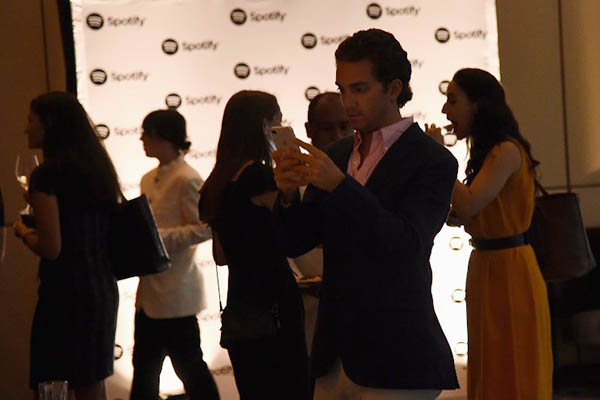
Ilya S. Savenok-Getty Images North America—AFP
Marketing agencies want to recruit more minorities to better reflect contemporary society
Walk into your average ad agency in America and you could be forgiven for thinking you had traveled back in time, with many still resembling the white male bastions immortalized in the series Mad Men. That may be about to change as the industry redoubles efforts to recruit more minorities, sensing a chance to strengthen ties to populations that feel assaulted in the Trump era—and better reflect contemporary U.S. society.
Outreach efforts toward minority populations have long been complicated by the paltry number of African-Americans who work in advertising: they remain in the single digits as a percentage of staff, while Latinos also are underrepresented.
For award-winning ad veteran Valerie Graves, who rose from being among the first black copywriters at the firms where she worked, to leading entire creative departments, the sector needs to recognize that non-whites “drive the popular culture of this country and of the world.”
“It hardly seems likely that we’re not capable of doing advertising at a very high standard,” she said, urging industry leaders to “realize that diversity is not just something that [they’re] being forced to do but is something that responds to the demographics of the country.”
That message seemed to be resonating at last week’s giant Advertising Week conference in New York, where numerous panels spotlighted efforts both to bridge the diversity gap, and connect with minorities alienated by President Donald Trump’s tough stance on immigration and racial issues. “There’s a real opportunity to forge a bond,” said Ludwig Ortiz, a senior vice president at Energy BBDO.
When Ortiz’ firm surveyed Hispanic shoppers—long seen as a key sector poised for growth—70 percent said they had seen displays of prejudice rise since the 2016 presidential election. Researchers have also found that Hispanics took notice when Apple, Facebook and other technology companies called on Trump to maintain protections for so-called “Dreamer” immigrants, brought to the country as children, said research consultant Marissa Romero-Martin.
Hispanics “are looking at what brands are doing and not doing,” Romero-Martin said.
An ad by Budweiser emphasizing the positive role of immigrants drew positive reviews at last year’s Super Bowl. But other campaigns have misfired—such as when Pepsi was roundly criticized for an ad in which Kendall Jenner made light of the “Black Lives Matter” movement—in what marketers see as symptomatic of the lack of internal diversity.
Nearly half of advertising employees believe the industry is “terrible” or “not great” at hiring diverse professionals, according to a 2016 survey by the American Association of Advertising Agencies (4A’s). “We are losing an opportunity to bring in diverse views,” said Keith Cartwright, executive creative director at BSSP, who often finds himself the lone African-American at client meetings.
To remedy the situation, the sector has put in place mentoring programs and scholarships to introduce young minority talent to industry leaders. But a key driver has been large clients—such as Verizon last year—who are increasingly demanding that their ad agencies step up the pace of change.
The telecoms company did not set quotas for minorities, but demanded “meaningful progress” from its ad firms, said Diego Scotti, its chief marketing officer. “We have 130 million customers,” Scotti said. “We appeal to everyone, so we have to represent internally the understanding of our audience. If we don’t, we won’t be successful.”
HP saw a jump in the promotion of women after delivering a similar ultimatum to its ad firms, although it says minorities are still too few. “On the underrepresented minorities, we didn’t move the needle as much as we want,” said Antonio Lucio, HP’s global chief marketing and communication officer. The company shifted recruitment to different schools and agencies to address the problem.
Her own success story aside, Valerie Graves fears progress will remain slow until there is a change in “mind and hearts.” But speakers at the New York fair urged executives to stay the course when they encounter resistance in the diversity push.
“When you really start to see organizational tension, don’t get scared and back away,” said Keesha Jean-Baptiste, senior vice president of talent engagement and inclusion at the trade association 4A’s. “At that point that’s when real change happens, which is underrepresented groups and majority culture starting to clash and creating real dialogue and a place of discomfort that start to drive outcomes… that change the nature of who’s rising to the top.”
